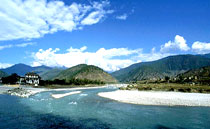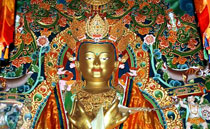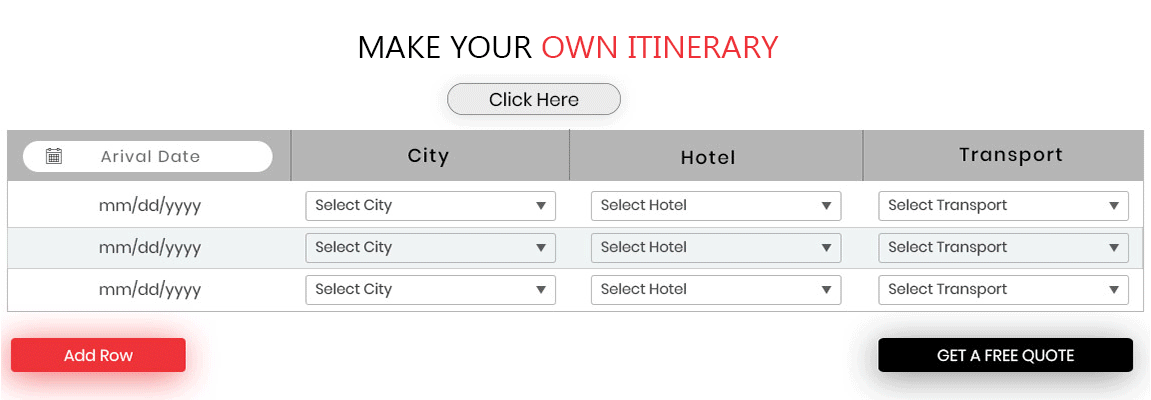Bhutan District - Punakha


Introduction
Located at an altitude of 4430 feet above sea level, Punakha had once served as the winter capital of Bhutan. A three-hour winding mountain drive from Thimphu will land you in Punakha, the former capital of Bhutan. The route climbs past the forestry research station at Yusupang, then through apple orchards and forests of blue pine. A temperate climate and natural drainage from the phochu(male) and Mochu (female) rivers, the fertile punakha valley produces abundant crops and fertile punakha valley produces abundant crops and fruit. Punakha served as the capital of Bhutan until 1995.
History
Punakha Dzong was strategically built at the junction of the two rivers in the 17th Century by the first Shabdrung to serve as the religious and administrative center. In spit of four catastrophic fires and a devastating earthquake that destroyed many historic documents, punakha Dzong houses sacred tempes including the Marchen where the embalmed body of Shabdrung Ngawang Namgyal lies in state. The Dzong has been fully restored by the present king. In 1993 the largest thongdrel,a religious embroidery composed entirely of appliqué on silk brocade, that has ever been created was dedicated to the Dzong and the people of the punakha valley by His Majesty King Jigme Singye Wangchuck and Je Khenpo at a three-day consecration which brought together Bhutan’s highest nobility.
Attractions
Viewing the scenery and then descend till you reach the Punakha Dzong located between Mochu and Phochu (Male 8 Female) rivers. The Dzong and the two rivers add exclusively to the scenic beauty of Punakha valley.
Punakha Dzong:- The main attraction in Punakha is the Punakha Dzong. It is the winter residence of the chief abbot and monks, who migrate there from Thimphu every winter. This dzong is noteworthy both for being one of the most beautiful dzongs in Bhutan and also for having been built by the first Shabdrung in 1637.
Chhimi Lhakhang:- it's a 20 minutes walk across fields through the village of Sopsokha from the roadside to the small temple located on a hillock in the centre of the valley below Metshina. Ngawang Chogyel built the temple in 15th century after the 'divine Madman’ Drukpa Kuenlay built a small chorten there. It is a pilgrim site for barren women.
Khamsum Yuelley Namgyal:- It is a three-storey chorten built by Her Majesty the Queen Ashi Tshering Yangdon in 1999 for the protection of the country, stands on a beautiful hillock called Ngezergang, and is about 6 miles from Punakha. It presents an incredibly complex iconography, which belongs to the Nyingmapa tradition.
Limbhukha:- Drive to the Punakha Dzong and walk across the suspension bridge. Follow the farmhouses gradually climbing towards Dompola Hills. The view of the Dzong, Phochu, Mochu Rivers and the surrounding village is superb amidst chirpine forest. The climb is another two and half hours to the Limbhukha. It is also known for its love of peace and tranquility. The legend say that during the medieval wars the “limpus” or the people of Limbhukha always volunteered as peace negotiators. This is depicted during the yearly festival called “Serda” when the men are found carrying a peace flags instead of swords and fireworks.
Shopping
Shops in Paro are open everyday. There are numerous handicraft shops throughout the valley.
Wildlife Sanctuaries





